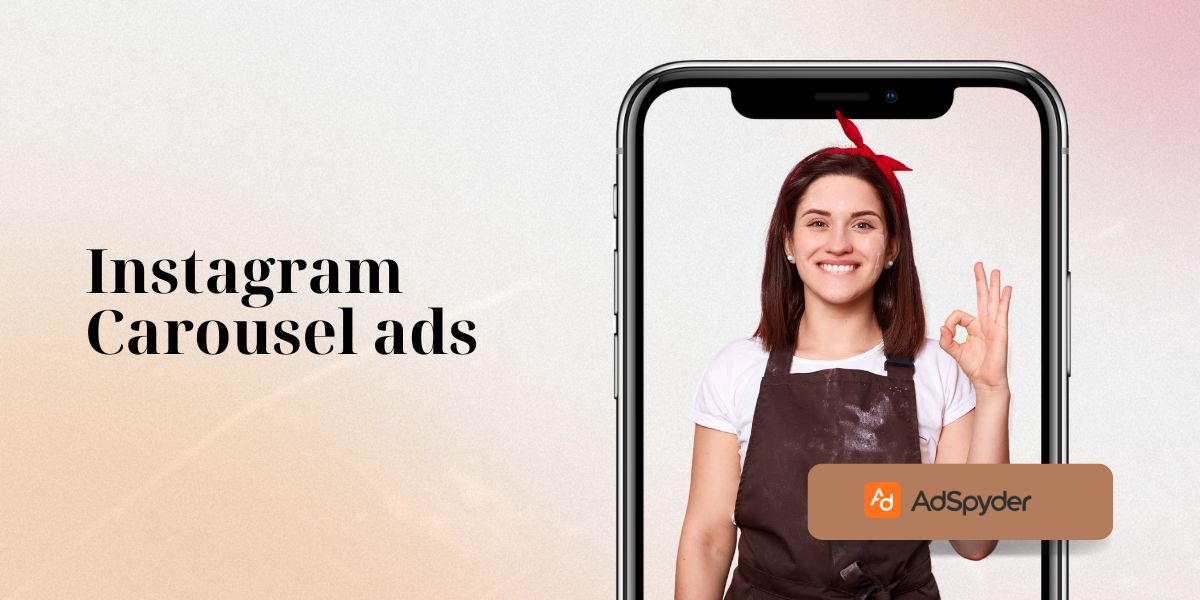The fitness sector is expanding because more people than ever before are prioritising their health and well-being. Although there are a lot of opportunities for gyms and fitness clubs, there is also a significant obstacle: how to differentiate your business in a crowded market and attract locals to it. Effective promotion is vital for increasing foot traffic and creating a strong membership base, even though providing top-notch equipment and sessions is also important. The world of Local Advertising for Gyms and Clubs will be covered in detail in this extensive guide, giving you the skills and information you need to develop campaigns that connect with your target market and attract new members.
Ready to Elevate your Marketing Strategy?
Why Local Advertising is Crucial for Gyms and Clubs
In contrast to big corporations, local customers are the main focus of gyms and fitness clubs. The most efficient strategy is local advertising since your target audience lives and works within a certain radius of your establishment. Here’s why:
- Targeted Reach: Local advertising can help you make the most of your investment and ensure that your message reaches the people who are most likely to join your gym.
- Building Community Connections: Apart from being locations for exercise, gyms can also function as community hubs. By introducing your gym to locals and creating a feeling of community, local advertising supports this.
- Driving Immediate Foot Traffic: Local advertising is great for bringing in foot traffic right away, particularly when promoting limited-time promotions, introductory memberships, or special incentives.
- Cost-Effectiveness: Compared to regional or national campaigns, local advertising is often more budget-friendly, allowing you to allocate resources strategically and achieve a strong return on investment.
- Enhancing Brand Awareness: Regular local marketing creates brand awareness in your neighbourhood and positions your gym as the go-to place for wellness and fitness.
- Supporting Local Economy: You may support the local economy in your community by concentrating on local advertising.
Understanding Your Local Fitness Audience
Knowing who your target audience is is essential before starting any kind of advertising effort. Which people are you attempting to draw to your gym? Consider these factors:
- Demographics: Occupation, income, age, gender, and family status are some examples of demographics. Is your target audience senior citizens, families, or young professionals?
- Fitness Goals: What fitness-related objectives do they have? Weight loss, muscle growth, improved cardiovascular health, stress reduction, or training tailored to a particular sport?
- Fitness Level: Are they beginners, intermediate, or advanced fitness enthusiasts?
- Lifestyle: Could you describe their way of life? Do they like being active and outside? Do they like working out in groups or by themselves?
- Interests: What are their interests outside of fitness? Do they have a particular sport, fitness, nutrition, or healthy living interest?
- Spending Habits: How much do they usually spend on fitness memberships? Are they willing to spend money on upscale facilities and services, or are they searching for more reasonably priced options?
Developing detailed audience personas will allow you to tailor your advertising messages and choose the right channels to effectively reach your target members.
Check Out – Fitness Equipment Businesses
Important Routes for Local Advertising for Gyms and Clubs
There are several channels that work very well for connecting with local fitness enthusiasts:
- Social Media Marketing (Facebook, Instagram, TikTok): Social media networks are perfect for interacting with your target audience, posting information about specials and classes, holding giveaways and contests, and creating a sense of community around your gym. Visual material is essential.
- Local Online Directories (Yelp, Google My Business): Potential clients can find your contact details, location, hours, and reviews with ease if your gym is listed in local web directories. Optimise and claim your Google My Business profile; local search depends on it.
- Local Search Engine Optimisation (SEO): Optimise your website and online presence for local search terms so that when locals are seeking exercise options, your gym will show up in search results.
- Community Events and Festivals: By taking part in or supporting regional celebrations and events, your gym can gain important publicity and establish a connection with the larger community. Provide complimentary fitness evaluations or demonstrations.
- Partnerships with Local Businesses: Working together with local companies, including health food stores, physical therapists, or corporate headquarters, might result in profitable marketing opportunities for both parties.
- Flyers and Posters: Distributing flyers and posters could be an affordable way to increase awareness in places that your target audience frequents, like community centres, apartment complexes, and nearby businesses.
- Local Influencer Marketing: You can expand your audience and establish credibility by collaborating with regional fitness gurus or well-known figures on social media.
- Referral Programs: By providing incentives, current members can be encouraged to recommend friends and relatives. Word-of-mouth advertising is quite effective.
- Email Marketing: Creating an email list enables you to communicate with your subscribers directly about upcoming classes, sales, and exclusive deals.
- Open Houses and Free Trial Offers: Potential members can get a firsthand look at your gym by hosting open houses or providing free trial memberships.
Crafting Effective Advertising Messages
Your marketing messaging should be customised to appeal to your target market and emphasise the special advantages that your gym provides.
- Focus on Results: People attend gyms in order to meet specific fitness goals. Highlight the accomplishments of your members, such as increased muscle mass, decreased body weight, or better general health. Use before-and-after photos to highlight the changes (with permission, of course!).
- Highlight Unique Programs and Classes: Do you provide specific classes such as spin, Zumba, yoga, or CrossFit? Do you employ personal trainers with specialised training? Highlight the distinctive features of your gym.
- Emphasise Community and Support: An encouraging and inspiring exercise atmosphere is what many individuals are searching for. Stress the support that your trainers and staff provide, as well as the sense of community that exists within your gym.
- Showcase Your Facilities and Equipment: To make a good impression, you must use high-quality images and videos of your gym’s equipment, classes, and general ambience. Emphasise any cutting-edge facilities or equipment you provide (pool, sauna, etc.).
- Encourage exclusive deals and rewards: Encourage enthusiasm and a sense of urgency by advertising time-limited deals, membership discounts, or initial packages.
- Make Use of Eye-Catching Images: Make use of excellent images and videos of individuals exercising at your gym, having fun in classes, and connecting with trainers. Highlight the pleasant vibes and enthusiasm.
- Tell Your Story: Tell us about your gym. Why did you decide to open it? What distinguishes your gym from others?
- Incorporate Unambiguous Calls to Action: Explain to your audience what you want them to do. Use phrases that are obvious calls to action, like “Join Now,” “Get a Free Trial,” or “Visit Our Website”.
- Target Your Messaging: Adapt your advertising messaging to the particular motivations and interests of the various segments of your target audience. For instance, whereas messaging for families can emphasise childcare services and family memberships, messages for young professionals might emphasise convenience and stress relief.
Leveraging Digital Marketing for Local Reach
Reaching local fitness lovers and advertising your gym online requires digital marketing.
- Google My Business, often known as local SEO: Check that your Google My Business profile is optimised. Make sure your contact details, location, hours, pictures, client testimonials, and class schedules are correct and current. React to both types of reviews, positive and negative.
- Social Media Marketing: Create a community around your gym by using social media to interact with nearby fitness lovers, post information about events and special offers, hold competitions and giveaways, and more. Engage local fitness groups and use pertinent hashtags. Launch social media campaigns with tailored ads to connect with local audiences who have particular interests and demographics. Make sure locals see your advertisements by using location targeting.
- Website Optimisation: Make sure your website is mobile-friendly and contains all the information you need about your gym, including class schedules, membership options, prices, trainer bios, and contact information. To draw in new members, have a blog with practical advice on diet and exercise.
- Online Booking and Class Registration: To make it simple for prospective members to register for classes or arrange a tour, incorporate an online booking system into your website.
- Email marketing: Create a list of local fitness aficionados and send them newsletters on a regular basis that include details about forthcoming classes, exclusive deals, the arrival of new equipment, and member success stories.
- Online Reviews and Reputation Management: Motivate pleased users to provide gratifying evaluations on websites such as Facebook, Yelp, and Google. You should keep an eye on your reputation online and respond to reviews that are both favourable and unfavourable.
- Cross-promotions and Local Partnerships: To reach a larger audience, collaborate on promotions with other nearby companies, including health food stores, spas, or physical therapists.
Community Engagement and Events
Establishing a solid relationship with the neighbourhood is crucial to your gym’s success.
- Host Regular Activities and Challenges: Organise boot camps, workshops, fitness challenges, and themed events on a regular basis to attract new members and promote a sense of community.
- Create a Welcoming Atmosphere: For individuals of all fitness levels, make sure your gym is a hygienic, cosy, and friendly place.
- Offer Free Consultations or Introductory Sessions: Offer potential members the chance to stop by your gym for complimentary consultations or introductory classes.
- Build Relationships with Local Businesses and Organisations: To advertise your gym and provide corporate wellness programs, make connections with nearby companies, educational institutions, and civic associations.
- Support Local Causes and Charities: You may build your gym’s reputation and establish connections with the community at large by collaborating with nearby charities or taking part in community activities.
Related – Sports Brand Awareness Ad Campaigns
Measuring Success and ROI
To determine your return on investment and make wise choices for upcoming campaigns, you must measure the effectiveness of your local gym and club advertising initiatives.
- Key Performance Indicators (KPIs): Decide which important indicators best fit the objectives of your campaign. Typical KPIs for local gym and club advertising include the following:
- Membership Growth: Keep track of how many new members you sign up each month and how your advertising efforts connect to that number.
- Website Traffic: Track the number of people who visit your website, especially to important sections such as your contact details, class schedules, and membership possibilities.
- Social Media Engagement: On your social media posts, track likes, shares, comments, and other interactions. Monitor engagement and follower growth.
- Lead Generation: Keep tabs on how many phone calls, forms, and queries your advertising campaigns generate.
- Class Sign-Ups: Keep an eye on how many people enrol in your classes, especially after you advertise them.
- Foot Traffic: Keep tabs on how many people visit your gym, especially during sales or following special occasions. Consider the use of a door counter or other tracking methods.
- Member Retention: Keep track of how long members remain at your gym. Long-term member retention should be supported by effective advertising.
- Customer Feedback: To determine areas for development and assess member happiness, keep an eye on member comments and internet reviews. To get feedback, use surveys or comment boxes inside the gym.
- Return on Investment (ROI): By contrasting the expense of your advertising with the income from new members, you can determine the campaign’s return on investment.
- Point-of-Sale (POS) System Data: Connect your marketing monitoring and point of sale system to track the relationship between advertising and membership sales.
- Social Media Analytics: Use the analytics features provided by social media platforms to keep an eye on crucial parameters like engagement and reach.
- Website Analytics: To monitor user behaviour, website traffic, and conversions, utilise Google Analytics or other website analytics solutions.
- Member Surveys: Ask new members questions to find out why they joined your gym and to get their thoughts.
- Promotional Codes and Tracking: To find out which advertising campaigns are generating the most sign-ups, use special promotional codes.
Must See – Retargeting Ads for Sports Product Buyers
Best Practices for Local Advertising for Gyms and Clubs
Employ location-based targeting, highlight actual member success stories, provide free trials, and be active on Google and social media to draw in and keep local customers.
- Know Your Community: Recognise the local population’s demographics, hobbies, and fitness objectives.
- Make Your Membership Plans Interesting: Tailor your membership packages to appeal to different target audience segments. Offer reasonable costs and a variety of options.
- Create a Welcoming Atmosphere: Make sure your gym is a hygienic, welcoming, and inspiring place for individuals of all fitness levels.
- Engage Your Audience: Respond to reviews, engage with local fitness enthusiasts on social media, and cultivate ties with your community.
- Use High-Quality Visuals: Invest in expert filmmaking and photography to highlight your gym and its services.
- Optimise for Mobile: Ensure that your marketing materials, online booking platform, and website are responsive.
- Monitor and Respond to Reviews: Keep a close eye on internet evaluations and reply to both favourable and negative remarks. React to problems promptly and competently.
- Track Your Results: Keep a close eye on your KPIs and modify your campaigns as necessary.
- Remain Consistent: Ensure that your visual style and brand message are the same across all of your marketing platforms.
- Build Partnerships: Work together with other nearby companies to develop marketing opportunities that will benefit both parties.
Common Mistakes to Avoid
Neglecting local SEO, using generic messaging, ignoring mobile optimisation, and failing to highlight unique offerings can weaken your gym or club’s advertising impact.
- Ignoring Local SEO: Not making sure your Google My Business profile and website are optimised for local search phrases.
- Not Targeting Your Audience: Utilising general marketing messaging that doesn’t appeal to certain groups within your neighbourhood fitness community.
- Overlooking Offline Channels: Concentrating only on digital marketing while ignoring more conventional channels such as posters, pamphlets, and neighbourhood gatherings.
- Failing to Track Results: Not keeping an eye on your KPIs and modifying your campaigns as necessary.
- Neglecting Mobile Optimisation: Failing to make sure that your marketing materials and website are mobile-friendly.
- Lack of Community Involvement: Failing to engage with local fitness lovers, connect with fitness organisations, and participate in community events.
- Inconsistent Branding: Utilising distinct graphic styles, messaging, or logos for various marketing platforms.
The Future of Local Advertising for Gyms and Clubs
Local advertising will keep changing as a result of consumer behaviour shifts and technological breakthroughs. Important trends to watch are as follows:
- Hyperlocal targeting: Targeting that is more specific based on location, user preferences, and real-time data.
- Wearable Technology Integration: Integrating fitness monitors, wearable technologies, gym membership programs and advertising.
- Customised Fitness Recommendations: Personalised fitness plans and workout concepts are produced using data analytics.
- Virtual Reality (VR) Fitness Experiences: Introducing virtual reality fitness experiences and classes to draw in new members.
- Gamification of Fitness: In marketing campaigns and fitness regimens, incorporate game-like elements that boost participation.
- Data-Driven Decision Making: Optimising campaigns, customising messaging, and increasing return on investment with data analytics.
Recommended For You – Facebook Ads for Outdoor Gear
Conclusion
For gyms and fitness clubs, local advertising is a great way to engage with locals, increase brand recognition, and expand their membership base. Understanding your target market, using the appropriate channels, developing messaging that appeals to them, and monitoring your progress will help you develop campaigns that work and position your gym as a top fitness destination. Keep in mind that consistent work, flexibility, and a sincere relationship with your local fitness community are necessary for effective local promotion. You can make sure your gym succeeds in the constantly changing fitness and wellness industry by embracing authenticity, emphasising distinctive experiences, and keeping up with the newest trends.
FAQs for Local Advertising for Gyms and Clubs
Why is it crucial for gyms to advertise locally?
Focuses on locals, fosters a sense of community, increases foot traffic, is reasonably priced, and raises exposure of local brands.
How can I determine who my local fitness audience consists of?
Take into account spending patterns, interests, lifestyle, fitness objectives, and demographics.
Which kind of advertising works best for gyms?
Flyers, social media, online directories, local SEO, influencer marketing, referral programs, email marketing, community events, and partnerships.
What makes an effective message for a gym ad?
Prioritise outcomes, draw attention to special offers, highlight the community, highlight facilities, advertise deals, utilise eye-catching imagery, and share your story.
How can gyms benefit from digital marketing?
Via targeted advertisements, social media marketing, online booking, email marketing, local SEO, and online reputation management.
Which local relationships work best for gyms?
Cross-promotions with local physical therapists, spas, health food stores, corporate headquarters, and other associated enterprises.
How can I assess the effectiveness of advertising in gyms?
Monitor membership expansion, website traffic, social media interaction, lead generation, class enrollments, foot traffic, member retention, client satisfaction, and return on investment.




